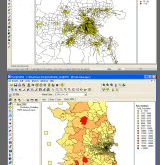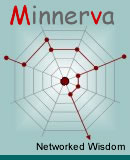
|
The Dublin Transportation Office
(DTO) have been responsible for modelling transport in the Greater
Dublin area since 1996 and since that time they have developed an
extensive multi-modal model for the region. Since then, the model
has undergone several revisions as the area of coverage has expanded,
as more data has come available and as the transport infrastructure
has evolved. Each revision has provided the opportunity to review
and develop in more detail components of the model’s structure.
2005 sees such a model update, and as part of this process a revised
Trip End and Trip Distribution Model has being developed by Minnerva,
and OmniTRANS is being used to deliver the models to the DTO.
The Trip Generation model is driven by a Car Ownership/Car
Availability model and both the Generation and Attraction components
of the model draw heavily on new 2002 Census data as well as a specially
conducted Home to School survey. Overall, the new Trip End Model
is structured by Person Type, Person Mobility and Area Type. Walk
and cycle trips are included in the calculation of trip rates and
this represents an extension to the current model structure.
Trip Distribution is based on a Destination Choice
model.This is an extension of the well understood Gravity model
structure with the exception that unexplained ‘noise’
in the model, usually dealt with by ‘K factors’ is treated
in a more refined manner. This is done by introducing explanatory
variable(s) other than generalised cost into the model to help understand
why people choose one destination ‘(identical’ in cost
terms) in preference to another. To calibrate this more complex
model structure, calibration software developed by Dr George Skrobanski
(Numeral Software) has been used; these have been developed in Ruby
as OmniTRANS compatible classes.
The new models are implemented in OmniTRANS and
delivered as a ‘user friendly’ package to the client
so that they can develop and run the model themselves as and when
new data is available for different future planning horizons.
DTO Head of Modelling Frank McCabe said "We
felt that the way in which Minnerva approached this project, and
the use of OmniTRANS, has been very innovative. We see that OmniTRANS
will help us in visualising and understanding our data and look
forward to using the model".
(Contact: Martin
Bach)
|

|
 |



